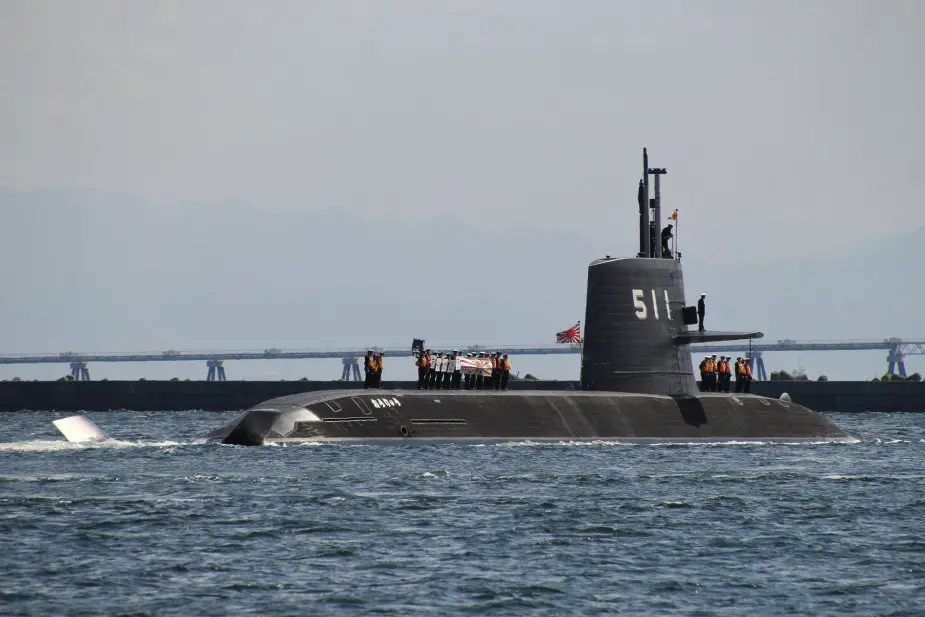Breaking news
Japan commissions first submarine running on lithium-ion batteries.
On March 5, 2020, Japan Maritime Self-Defense Force (JMSDF) commissioned its 11th Soryu-class diesel-electric attack submarine (SSK) in Kobe in Hyogo Prefecture. JS Ōryū (SS-511) joins the JMSDF’s Submarine Flotilla 1, based in Kure. It is the first-in-class boat to feature lithium-ion batteries.
 JMSDF Commissioned its 1st Li-Ion Battery Submarine SS-511 JS Ōryū (Picture source: Twitter account: kakoline125)
JMSDF Commissioned its 1st Li-Ion Battery Submarine SS-511 JS Ōryū (Picture source: Twitter account: kakoline125)
In a ceremony held at the Mitsubishi Heavy Industries shipyard in the city of Kobe, officials welcomed the diesel-electric attack submarine Ouryu into service, where it will be assigned to the 1st Submarine Flotilla in the nearby port of Kure.
Named JS Ōryū (with pennant number SS 511), the 84-m-long boat was inducted into the JMSDF's Submarine Flotilla 1, based in Kure, Hiroshima Prefecture, shortly after being handed over by shipbuilder Mitsubishi Heavy Industries (MHI) at its facility in Kobe, a JMSDF spokesperson told Jane's that same day.
The eleventh Sōryū-class submarine (Ōryū) is the first Japanese submarine in the fleet to mount lithium-ion batteries. The JS Ōryū was given a budget of ¥64.3 billion/US$536.7 million under the 2015 Japanese Defense Budget.
Lithium-ion batteries have almost double the electric storage capacity of traditional lead-acid batteries, and by not only replacing them in the existing battery storage areas but adding to the already large battery capacity by also filling the huge space (several hundred tons displacement) inside the hull previously occupied by the AIP Sterling engines and their fuel cells with these new batteries, the amount of (more powerful) batteries carried overall is massive.
This has improved the underwater endurance significantly and is felt will be an advantage over the slow recharge capability of the AIP system. In any event, JMSDF believes that lithium-ion is the way forward and intends to 'trial' this new system and compare it to the previous AIP system for operational effectiveness.




























